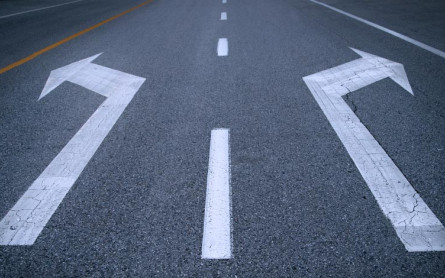KiwiSaver



Planning & budgeting
Saving & investing
KiwiSaver
Tackling debt
Protecting wealth
Retirement
Home buying
Life events
Setting goals
Money tracking
Plan your spending with a budget
Getting advice
Studying
Get better with money
What pūtea beliefs do you have?
How to save your money
How to start investing
Find a financial adviser to help you invest
Your investment profile
Compound interest
Net worth
Types of investments
Term deposits
Bonds
Investment funds
Shares
Property investment
How KiwiSaver works and why it's worth joining
How to pick the right KiwiSaver fund
Make the most of KiwiSaver and grow your balance
How KiwiSaver can help you get into your first home
Applying for a KiwiSaver hardship withdrawal
How to use buy now pay later
Before borrowing
How to get out of debt quickly
Credit reports
Know your rights
Pros and cons of debt consolidation
Credit cards
Car loans
Personal loans
Hire purchase
Student loans
Getting a fine
What happens if I start to struggle with moni?
How to protect yourself from fraud and being scammed
About insurance
Insurance types
Insuring ourselves
Wills
Enduring powers of attorney
Family trusts
Insuring our homes
Losing a partner
Redundancy
Serious diagnosis
How to cope with the aftermath of fraud
Separation
About NZ Super
This year's NZ Super rates
When you’re thinking of living in a retirement village
How to plan, save and invest for retirement
Manage your money in retirement
Find housing options in retirement
Planning & budgeting
Saving & investing
KiwiSaver
Tackling debt
Protecting wealth
Retirement
Home buying

KiwiSaver

Budgeting

Women

Women

Women

Budgeting

Budgeting

My Money Sorted


Resources
Help with the cost of living
Just wondering
In need of financial help
Booklets
Glossary
Videos
Blogs
View all
9 June 2015
Reading time: 3 minutes
Posted
by
Tom Hartmann
, 0 Comments

Imagine you’re holding a dollar in your hand. Where best to put it? The short answer is wherever it gets you the most back.
So what would help you get ahead more – being in KiwiSaver or paying off debt quicker?
Whenever you pay off debt, you are saving yourself the interest you would have paid and moving yourself in the right direction financially. If it’s a credit card, that’s like getting a sure 20% return for your money. If it’s a mortgage, think of it as a 6% return to you when you put that extra dollar there.
But how does that compare with what you get if you put that dollar in KiwiSaver? And now that the $1,000 kick-start is no longer around, does that change the way things look?
Since your KiwiSaver money is invested for you in a fund, it can earn you returns each year. As we ran the numbers for this, we used a balanced return of 4.4% after fees and taxes are paid. So if you looked at just KiwiSaver investment earnings, which are difficult to predict, it would be a better choice to pay off debt.
But with KiwiSaver, on top of your investment earnings, there is also the government’s contribution. Even though the $1,000 kick-start is no longer there, for every dollar you put into KiwiSaver, you get an extra 50 cents, up to $521 each year. In that first year, that is basically like getting a 50% return for the $1,043 you put in.
You also get your employer’s contributions that match the first 3% you put in.
So altogether, say if you were on $50,000 per year and contributing 3% of your salary, thanks to the government and employer contributions adding to the investment earnings, you would be looking at a 117% return over the year. That’s way better value than paying off debt, and to find any other investment that’s guarantees a similar return is impossible (you may want to run the other way if someone offers one!).
Now, let’s say you had a mortgage of $250,000 and you joined KiwiSaver while you paid it off. After 30 years you’d end up with the mortgage paid and a KiwiSaver balance of $289,000.
But what if you took your KiwiSaver contributions and made higher mortgage repayments? Say you paid it off, then joined KiwiSaver and put your mortgage repayments into KiwiSaver to catch up on your retirement savings. Well, after 30 years your KiwiSaver balance would still only be $203,000.
So in the end, the answer to the question “KiwiSaver or debt?” is actually “KiwiSaver and debt”. You want to be in KiwiSaver to collect all the benefits. Make sure your annual contributions are enough to get the full returns, then you can use any spare funds to shrink whatever debt you may be carrying.
5 steps to get your $521
1 Comment
Who’s teaching your daughter (or niece, or granddaughter) about money?
1 Comment
My Money Sorted: Hilary Barry
2 Comments
My Money Sorted: Ben
3 Comments
My Money Sorted: Daniel
1 Comment
8 ways to hack Christmas when you’re stretching the budget
6 Comments

Use verification code from your authenticator app. How to use authenticator apps.
Code is invalid. Please try again
Don't have an account? Sign up
Or log in with our social media platforms


A Sorted account gives you a personal dashboard where you can save your tools, track your progress and you'll also receive helpful money tips and guidance straight to your inbox.



Comments (0)
Comments
No one has commented on this page yet.
RSS feed for comments on this page | RSS feed for all comments